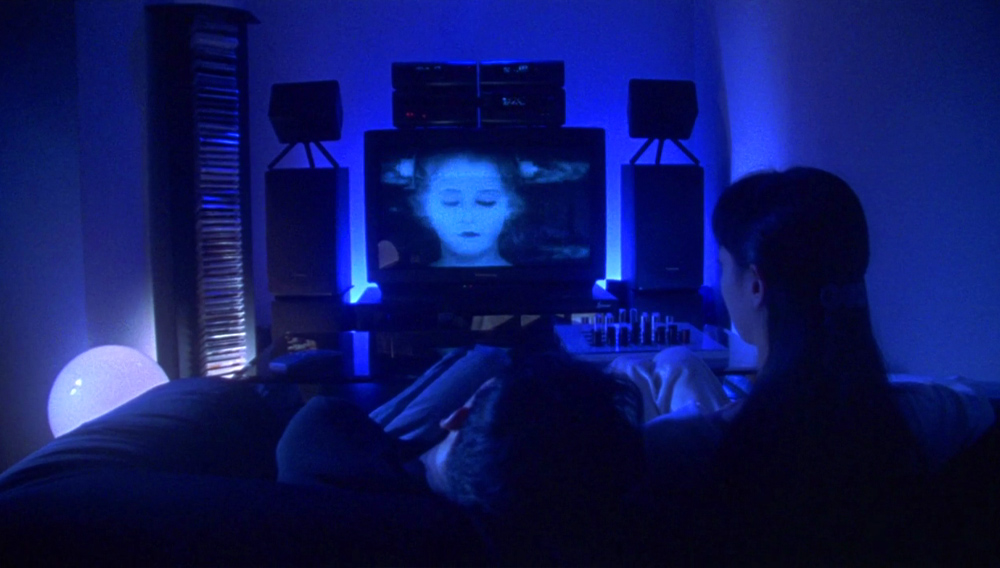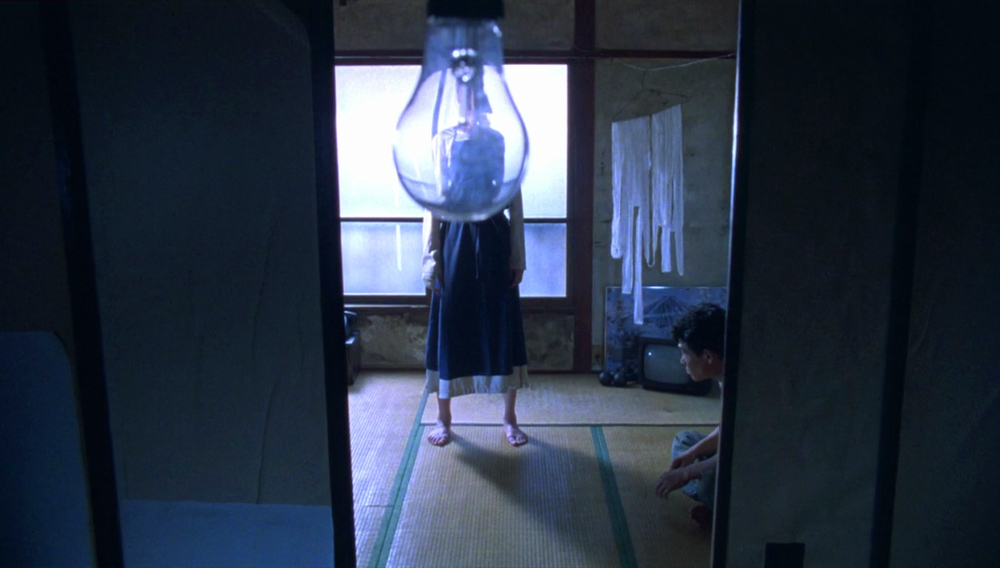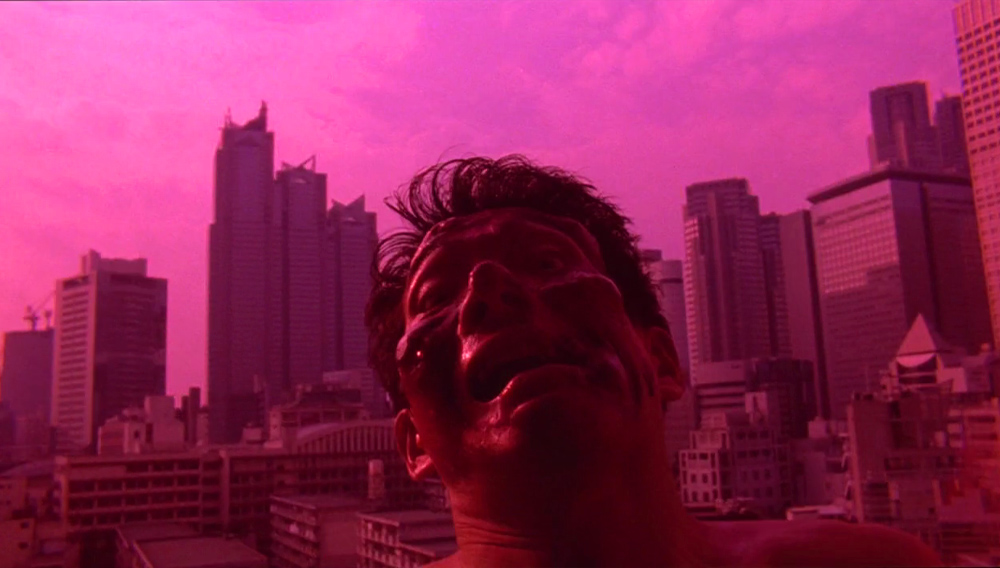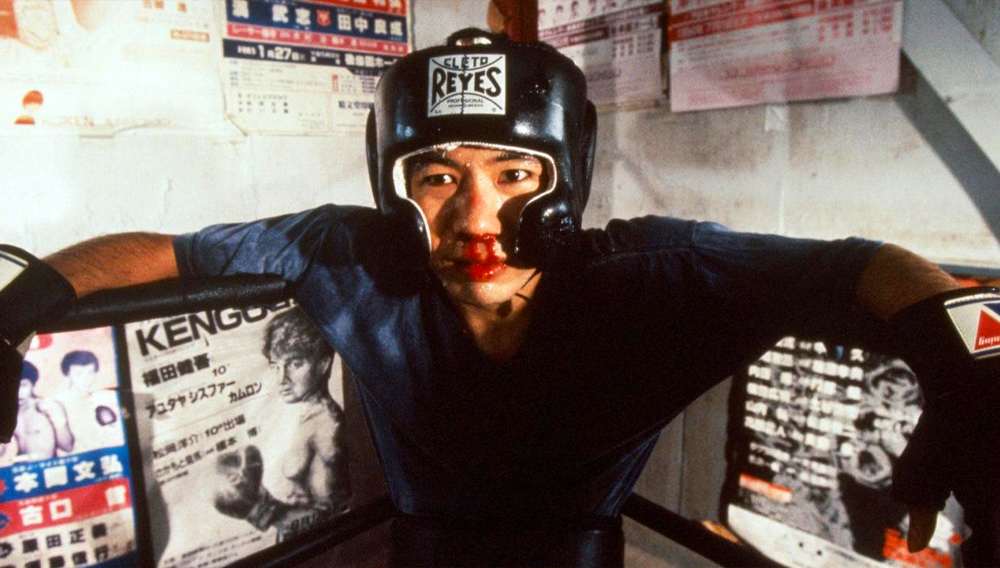A cult filmmaker from a nation of cult filmmakers, Shinya Tsukamoto is best known (or forever notorious) for his first major feature, shot on 16mm and released in 1989 after a series of fantastical Super-8 films that he began making as a teenager. Tetsuo: The Iron Man was heavy metal, indeed. A “Metamorphosis” for machine heads, the story posits what happens after an ordinary salaryman becomes a junkyard-infused Transformer. Science-fiction, a peculiarly Japanese fetish vibe, scary nightmarish sex, body horror, visual insanity—it’s all there, along with the crazypants plot twists.

Tsukamoto might have simply retired at this point and never made another movie and he’d still be in the gonzo cinema pantheon. Lucky us, he’s still going. Besides the original monochrome-hued Tetsuo and its full-color sequel Tetsuo II: Body Hammer, Fandor is also streaming his erotic thriller A Snake of June (2002) and the graphically gruesome (you know you love it!) Tokyo Fist (1995).
Tsukamoto’s Raging Bull more or less, Tokyo Fist‘s often surreal and disorienting saga brings a fraught romantic triangle to the boxing ring, where passions, regrets and revenge are played out as ferocious bloodsport. The lyric “Love will tear us apart, again” has never rung truer as it does amid the sheer lacerating torment that former friends Tsuda (Tsukamoto himself), an insurance salesman with a very “mid” existence; Kojima (the filmmaker’s brother Koji), a semi-pro boxer; and Hizuru (Kahori Fujii), the woman they both desire, inflict on each other and themselves. It’s what happens when jealousy, infidelity, the specter of unresolved old scores, emotional bullying and the need to transcend the weakness of one’s own flesh (by mortifying it) collide in a fever dream of fisticuffs. Is there a body count? You bet.

It’s difficult to imagine David Fincher not having seen Tokyo Fist before making Fight Club. The latter’s Y2K paranoia is absent from the former, as is the quirky male bonding/men’s rights subculture, but they both share a core premise: That of a workaday milquetoast going mano a mano in potentially deadly combat, partnered with a more skilled buddy/antagonist (before everything goes off the rails). Both films go very hard with the old ultraviolence.
Of the two, Tsukamoto is much further detached from realism, bathing nearly half the movie (most of the non-boxing dialogue scenes) in a dark blue filter and escalating the fights into lethal bouts of face-hammering, arterial-geysering gore. Even glimpses of training sessions have a jittery, hyperbolic energy, the tilted and kinetic camera floating like a butterfly between the punches. The dizzying, highly stylized use of movement, lighting, slow motion and other effects casts the whole movie as a weird fever dream or flashback, as characters become so possessed by the forces that drive them that they nearly and literally shatter themselves.

Indeed, the movie’s escalating intensity and pulverizing final fight scenes take make-up and effects to their ultimate level. We see a fist smash straight into a liquifying head, flesh shredding off in pulpy crimson clumps. Even to win is to lose. As the camera slowly rotates around from behind the victor to show his face, it reveals the spurts of blood erupting before an imminent mortal collapse. That is total commitment to the riff.
Now 63, Tsukamoto has cultivated a parallel career as an actor, and not only in his own films. He’s worked for fellow cult god Takashi Miike (including Ichi the Killer, natch) and Martin Scorsese (in the Edo period drama Silence), among other roles on big and small screens. Not bad at all for a Tokyo kid who, like so many filmmakers of the pre-digital era (notably precocious types like Steven Spielberg and the Coen Brothers) nurtured his budding creative drive on Super-8 productions. Story of a Giant Cockroach, anyone? The Adventures of Electric Rod Boy? I think it’s time for the box set. Until then, as Axl Rose once bellowed, “Get in the ring!”




